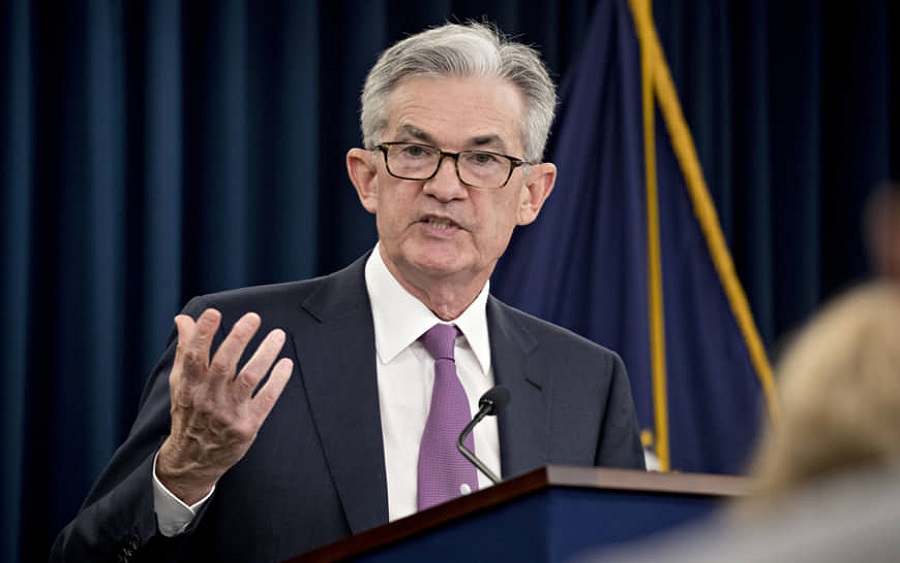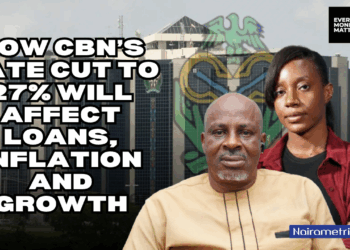The United States Federal Reserve raised its target interest rate by three-quarters of a percentage point to combat a disruptive rise in inflation, while also forecasting a weakening economy and growing unemployment in the months ahead.
This was disclosed via a press release titled ”Federal Reserve issues FOMC statement”. The rate hike is the biggest by the Federal Reserve since 1994, and it came after recent data indicated little headway in the country’s inflation fight.
Officials from the United States’ central bank hinted at a speedier path of borrowing cost hikes ahead, aligning monetary policy more closely with a swift shift in financial market estimates of what it will take to bring price pressures under control this week.
What the FED is saying
The Federal Open Market Committee, raised its benchmark funds rate to 1.5% -1.75%, the highest level since just before the Covid epidemic began in March 2020, putting an end to weeks of speculation.
The Fed said, “The Committee seeks to achieve maximum employment and inflation at the rate of 2 percent over the longer run. In support of these goals, the Committee decided to raise the target range for the federal funds rate to 1‑1/2 to 1-3/4 percent and anticipates that ongoing increases in the target range will be appropriate.”
Officials also significantly cut their outlook for 2022 economic growth, now anticipating just a 1.7% gain in GDP, down from 2.8% in March.
“Inflation remains elevated, reflecting supply and demand imbalances related to the pandemic, higher energy prices and broader price pressures,” the central bank’s policy-setting Federal Open Market Committee said in a statement at the end of its latest two-day meeting in Washington. “The committee is strongly committed to returning inflation to its 2% objective.”
The statement was approved by all FOMC members except for Kansas City Fed President, Esther George, who preferred a smaller half-point increase. The Fed’s move comes with inflation running at its fastest pace in more than 40 years. Central bank officials use the fund’s rate to try to slow down the economy – in this case, to tamp down demand so that supply can catch up.
What you should know
- The policy tightening is happening with economic growth already tailing off while prices still rise, a condition known as stagflation.
- The Apex Banks use the rate as a benchmark for what they charge each other for borrowing. However, it feeds directly through to a multitude of consumer debt products, such as adjustable-rate mortgages, credit cards and auto loans.
- Since March, when Fed officials projected they could raise rates and control inflation with the unemployment rate remaining around 3.5%, inflation has stubbornly remained at a 40-year high, with no sign of it reaching the peak Fed policymakers hoped would arrive this spring.
- Even with the more aggressive interest rate measures taken on Wednesday, policymakers nevertheless see inflation as measured by the personal consumption expenditures price index at 5.2% through this year and slowing only gradually to 2.2% in 2024.
- Inflation as measured by the consumer price index rose 8.6% on a yearly basis in May. The University of Michigan consumer sentiment survey hit an all-time low that included sharply higher inflation expectations. Also, retail sales numbers released Wednesday confirmed that the all-important consumer is weakening, with sales dropping 0.3% for a month in which inflation rose 1%.
- The jobs market has been a point of strength for the economy, though May’s 390,000 gain was the lowest since April 2021. Average hourly earnings have been rising in nominal terms, but when adjusted for inflation, have fallen 3% over the past year. The committee projections released Wednesday to see the unemployment rate, currently at 3.6%, moving up to 4.1% by 2024.























